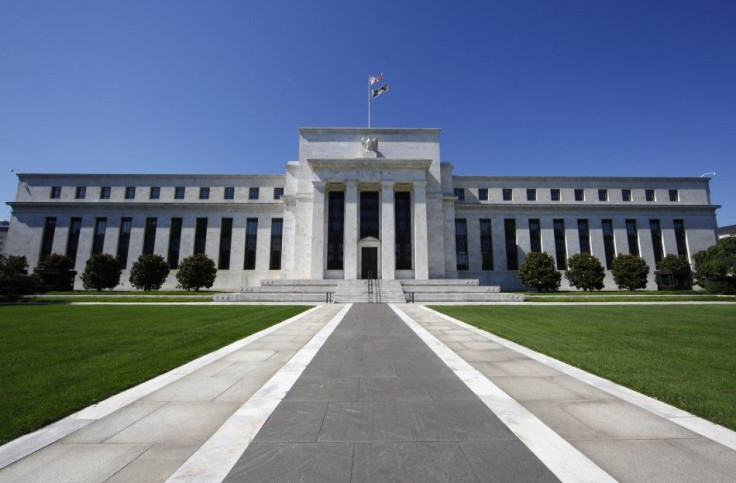Fed Leaves Policy Steady, Downside Risks Remain

(REUTERS) - The Federal Reserve on Tuesday left monetary policy on hold but said financial market turbulence posed threats to economic growth, leaving the door open to further easing next year.
The Fed characterized the economy as expanding moderately despite an apparent slowing in global growth, though it added that unemployment remains elevated and housing activity depressed.
Strains in global financial markets continue to pose significant downside risks to the economic outlook, the central bank said in its post meeting statement.
Offering no new guidance on its evolving communications policy, the Fed repeated that it expects inflation to settle at levels at or below those consistent with its price stability mandate.
For a second time running, Chicago Fed President Charles Evans dissented against the decision, saying he favored additional easing now.
The U.S. central bank has held overnight interest rates near zero since December 2008 and has bought $2.3 trillion in government and mortgage-related bonds in a further attempt to stimulate a robust recovery.
Fed officials are divided among those who think high unemployment and sluggish growth demand more action and those who view the central bank's already-aggressive efforts as bordering dangerously on an invitation to inflation.
Some influential policymakers, including Vice Chair Janet Yellen, have suggested they would be inclined to take additional steps if growth fails to pick up.
Recent data about the U.S. economy do point to some improvement. The jobless rate tumbled 0.4 percentage point to 8.6 percent in November, factory activity has quickened and businesses are restocking depleted shelves.
Consumer spending also appears reasonably solid, although a softer-than-expected report on November retail sales on Tuesday offered a hint that it could be flagging.
The U.S. economy expanded at a 2.0 percent annual rate in the third quarter, a welcome acceleration from a sub-1 percent pace over the first half of the year. Forecasters hope growth will top a 3 percent rate in the current quarter.
However, analysts say the recovery's current strength is partly a snapback from the weakness that followed Japan's natural disasters and high oil prices early in the year.
They caution that a return to more-sluggish growth is likely, particularly with a recession brewing in Europe, which has been battling a virulent debt crisis.
Many observers believe the Fed will step in to take steps to stimulate growth in 2012, first through communications measures that drive home their expectation that interest rates will not rise for along time, and then through more bond buying.
Yellen has said the Fed could reinforce its ultra-accommodative monetary stance by publishing policymakers' forecasts for the path of interest rates. Officials are also debating whether to adopt an explicit target for inflation.
The first step would reassure skittish markets that the Fed is not about to tighten policy any time soon. The latter would aim to dispel any doubts about the central bank's commitment to keeping inflation low.
Top officials have also remained open to adding bonds to the Fed's already bloated portfolio.
Some have said the central bank should resume purchases of mortgage-backed securities to help revive the depressed housing market; others would prefer to stick with purchases of U.S. government debt.
(Additional reporting by David Lawder; Editing by Andrea Ricci)
© Copyright Thomson Reuters 2024. All rights reserved.











